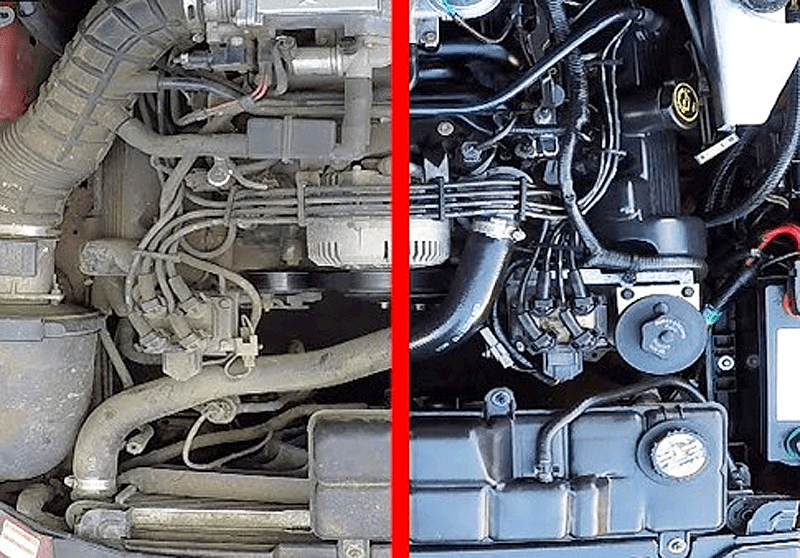Blog

How to Maintain Your Car Engine for Higher Efficiency.
A sound, useful vehicle requires a solid engine, and for your engine to stay in great working order it must be well-kept up. How about we examine some essential engine support, what's required to keep your vehicle's engine working at pinnacle performance. Utilize these tips to lessen later fix costs, improve your vehicle's performance, and expand its life expectancy.
1. Check the oil routinely
Oil is the soul of your engine. Since there are such a large number of moving, pivoting parts in there, your engine must be very much greased up. As you drive around, however, your oil begins to debase, while a few gets scorched off in the motor – this is the reason you should check and replace your oil normally. Otherwise, the friction will gradually increase bringing about mechanical wear, while the engine will endure a development of carbon stores and sludge.This thus will affect performance and driveability in different ways. How regularly would it be advisable for you to replace your oil? A valuable standard guideline is that you should transform it at regular intervals or in the wake of voyaging 3,000 miles. In any case, in the event that you normally make just short trips in which your engine doesn't have opportunity to heat up, you drive a ton in stop-start traffic, you tow a truck, OR you drive on dusty streets – at that point you may need to replace your oil all the more consistently. To check your oil, utilize the dipstick – in the event that it looks grimy (dark colored/dark), at that point it needs evolving. The markers on the dipstick will likewise reveal to you how much oil is left in the motor, and whether it should be beaten up.
2. Protect your engine from overheating
The fuel that is burned inside your engine produces bunches of warmth. Keeping the temperature of the engine within legitimate breaking points – that is the activity of the cooling framework. At the point when the cooling framework breakdowns – due, state, to absence of coolant on account of a hole – this can make the engine overheat, prompting genuine complexities. This is the reason it's essential to normally check the coolant levels in your engine – your vehicle's manual will give you guidelines how. Look under your vehicle for any indications of a coolant spill. If you can't discover any issues with the cooling framework, yet your engine temperature is as yet excessive, get your vehicle checked at the earliest opportunity.
3. Get a customary check up
In the event that out of the blue the engine of your vehicle feels lacking in power, lazy and so on, at that point it may very well require a decent adjust. A check up may include changing the flash fittings, the air filter, or clearing out the motor throttle body. PCV valves, as well as the fuel infusion framework, may likewise should be cleaned or supplanted. In the more seasoned autos, it might incorporate supplanting the fuel channel, start wires, and wholesaler framework. A check up ought to be one each 60,000 to 90,000 miles.
4. Check the planning belt
The planning belt guarantees the valves worked by your motor's camshaft open and close in time with the cylinders. In the event that your planning belt is old or harmed, and thus snaps while the motor is running, this can make serious harm your motor. In this way you ought to consistently check your planning belt for indications of mileage, and on the off chance that it is absorbed oil from the motor. A planning belt ought to be supplanted in occasion at interims prescribed by the maker; for the most part from 60,000 to 105,000 miles.
5. Change the air channel at regukar intervals
The air filter in your engine keeps residue and flotsam and jetsam from stopping up your motor. A grimy air filter limits the measure of air provided to your motor, bringing about absence of intensity and lazy execution. An old air channel can likewise tear, permitting flotsam and jetsam and residue into your motor, causing mileage. So make sure to supplant your air channel at the intervals suggested by the producer, you can discover this data in the client manual provided with your vehicle. (In any case, it's commonly every 15,000 to 20,000 miles – more in the event that you drive on dusty, unpaved streets).
6. Supplant destroyed drive belts
The drive belt associated with your motor runs the alternator, the air-con blower in addition to any extra frill associated with your motor. A few vehicles have one drive belt just, while others have a few. After some time, the drive belts wear out; if exceptionally worn or even split, the drive belt can break, which will impair your motor. A squeaking commotion is regularly the primary sign that your drive belt needs checking. As a rule, the drive belt is analyzed when you get your oil changed.
Posted on September 2019,10 // Author: Admin